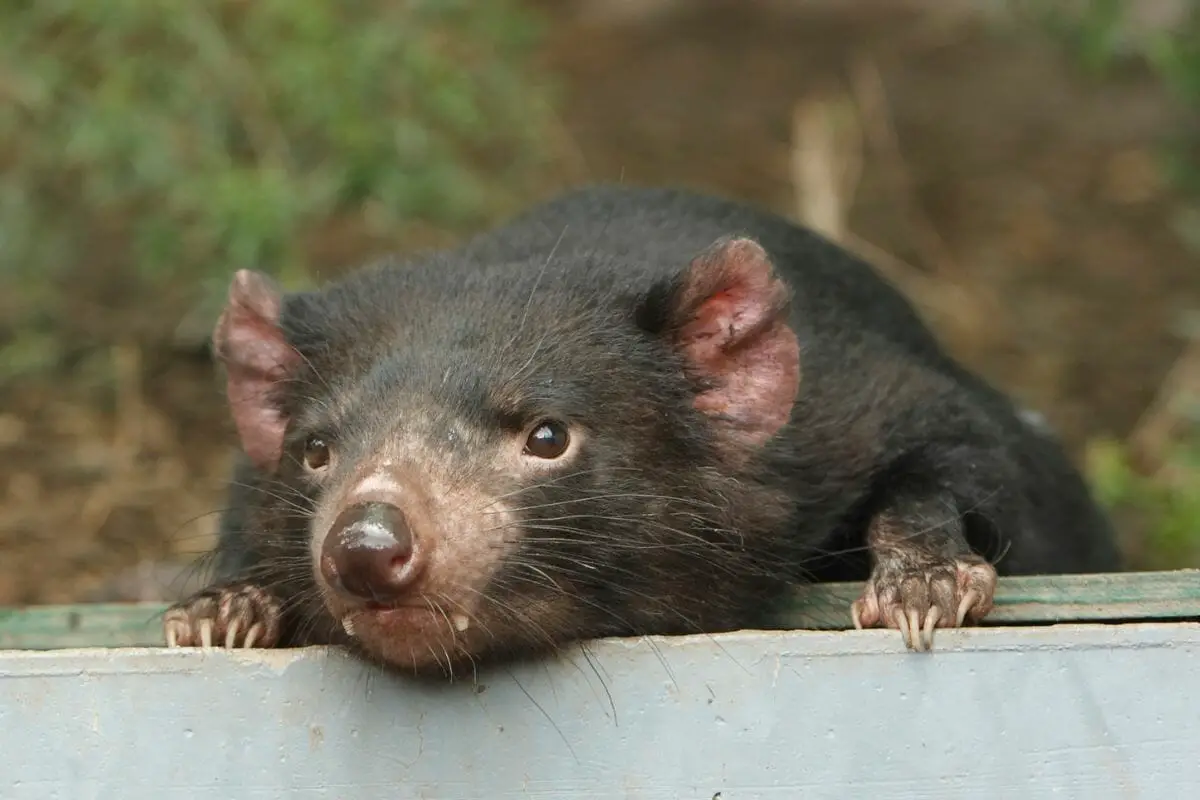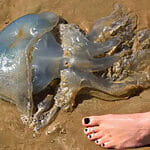The Tasmanian devil has a complex public image, composed of both a cute, cartoon lovability, and a real world reputation as a snarling, cranky carnivore.

For this reason, they can often be misconstrued by many, especially those interested in more exotic pets, who might think that a Tasmanian devil would make the perfect addition to their domestic family life.
But what exactly is the truth? Can Tasmanian devils make good house pets, and if not, why?
Can Tasmanian Devils Be Pets?
As with many mammals native to Australia, Tasmanian devils are widely considered to be unsuitable for domestication, namely due to their lack of adaptability to life in a human home.
As far as the Tasmanian devil goes, the main worry by officials is the danger that these animals could pose, especially when you factor in their voracious carnivorous diet, and their temperamental personalities that can make them prone to aggression.
Benefits Of Domesticating Tasmanian Devils
Despite this ruling, there are many conservationists who are widely in favor of Tasmanian devils being introduced as family pets – namely (see also: Where Did The Name Tasmanian Devil Come From? (The Truth Is In The Name))as a means of saving their dwindling population.
Saving Dwindling Populations
The Tasmanian devil has been beset by disadvantages, all of which have had a distinct impact on their numbers – numbers that haven’t managed to recover since their introduction to European settlers, who first arrived on the island of Tasmania in 1642.
Early settlers hunted them to near extinction, and their numbers have not recovered substantially since that time, especially as heavy industry came to the island, human beings began expanding their urban centers, and the volume of fast moving traffic increased – the latter of which has been very disruptive and dangerous for the devil population.
As a result, conservationists see the only real option for avoiding extinction is to popularize Tasmanian devils as household pets, where they could be raised from a young age and domesticated in the same way that other small mammals have.
Decreasing Hunting
There is also the hope that, through them becoming a loveable addition to the family home, their image could then be changed from one of a snarling pest, to something people would be less likely to kill.
In doing this, the hope is that wild populations might finally get the chance to thrive once more, eventually even reaching the numbers the Tasmanian devil populations once amassed centuries ago.
Avoiding Disease
Unfortunately, the biggest threat to the Tasmanian devil is one that is even harder to stop than hunting – cancer.
The species are plagued with a condition known as Devil Facial Tumor Disease, which is incredibly common and rife within wild devil populations, and has a high mortality rate as a result.
The main way this disease causes death amongst devils is through the growth of tumors in and around the jaws, which make it difficult for them to breathe and consume meat – leading to them often dying from starvation.
By establishing them as domesticated pets on mainland Australia and other surrounding regions, this would effectively act as a firebreak in the spread of the disease, creating a pure subspecies away from Tasmania wherein the population could thrive once more.
How Suitable Are They As Pets?
While many of the above reasons are valid, they are grounded in good intentions rather than common sense.
While there are many attributes to the Tasmanian devil that would make it a good pet – such as sleep schedule, diet, and size – they still have many behavioral problems that make them a wild card as far as domestication goes.

The fact of the matter is that any wild animal can be dangerous when taken as a pet.
Even domesticated species like dogs and cats can be dangerous in certain situations, and they have been specifically bred for domestication over a period of generations.
Ultimately, the Tasmanian devil can be very dangerous when it wants to be, and officials have insufficient evidence that, even when domesticated, they wouldn’t have a predilection to return to their baser temperamental natures.
Tasmanian Populations In Zoos
Despite this, Tasmanian devils remain a popular attraction in zoos and wildlife habitats throughout the world, and their general docility in these environments is one of the reasons that advocates push for domestication of the species.
Many Tasmanian devils who have been raised in captivity by humans remain docile, and do not demonstrate the same wildness or temperamentality that can be seen in the wild.
However, they still have immensely powerful jaws that trainers, staff, and visitors have to be aware of.
Should We Domesticate Tasmanian Devils?
Of course, with all of this information for and against, the real question is: should we do it?
Arguments In Favor
Despite their ‘crankiness’, Tasmanian devils have shown to be generally docile, even when encountered in the wild, which suggests a solid foundation for domestication into household pets.
Many experts refer to the dog, which hundreds of years ago was a vicious wolf – a creature much more fearsome than the Tasmanian devil.
The fact that we were able to do this with a much larger, much more dangerous creature, has left scientists keen to experiment.
Many officials argue against the ‘phantasm’ of wilderness – stating that the widespread belief that ‘nature will handle itself’ is a myth, and one that only becomes true if people respect nature in the first place.
Of course, as a species we have proven we can go both ways on the issue, which is why proponents of domestication suggest that it is only through the alteration of public perception, that the Tasmanian devil can be saved.
Arguments Against
Aside from the apprehension based on potential danger, another reason officials are reluctant to domesticate the devil is thus: at what point does conservation become a transformation?
That is, in trying to save a specific creature from extinction, is completely transforming them and outbreeding any negative traits the best way to do that?
In fact, would this even count as conservation, or is it just the remodeling of a wild, distinctive, proud animal, with a long national heritage, into some new, harmless ball of fur that can sit in a hutch in the backyard and get petted by eight year olds?
What Can We Take From This?
Ultimately, this complex discussion does not create an immediately clear answer.
But what it does do, however, is open the subject up as something that must be debated – particularly as we advance as a society, and the population of species like the Tasmanian devil continue to dwindle.
Perhaps this partial domestication could be the answer they need? It’s certainly worth talking about.
Final Thoughts
And there we have it, everything you need to know about Tasmanian devils, and their suitability for domestication as pets.
Tasmanian devils are certainly fascinating creatures, and ones that have been a key part of the Australian national character for generations.
Let’s all hope that, one way or another, we find a way to keep these rambunctious critters in our lives for many more generations to come.
- What Should I Do If A Koala Bites Me? Safety Guide - 2024-05-30
- Are Kangaroos Born Without Hind Legs? A Fascinating Journey - 2024-05-30
- Animals That Look Like Squirrels - 2024-05-30









